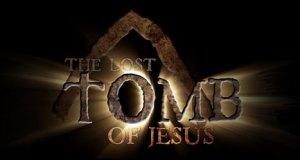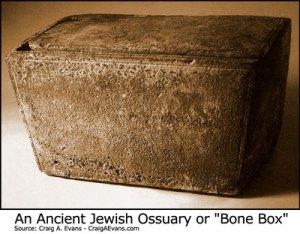
During Easter this year, there was a startling claim made by Israeli Geologist Doctor Aryeh Shimron – “the Son of God was buried with nine other people, including Judah, son of Jesus and his wife, named Mary.” In other words – Dr Shimron is claiming that scientific methods have been used to refute and dismiss the 2000 year old Christian claim that God raised Jesus of Nazareth physically from the dead following his crucifixion at the hands of the Roman authorities during the AD 30s.
This is fascinating – but when one looks at what he is saying – the case he proposes is pretty weak to me.
The tomb in question is not a new discovery at all. The Talpiot tomb was unearthed during the 1980s. And the original case for identifying the Talpiot tomb as the permanent resting place of Jesus of Nazareth and his wife and children took quite a stretch of the imagination.
This case was made back in 2007 when movie director James Cameron (I’m a big fan of his movies) made a big media splash claiming that the final resting place of Jesus had been identified…his documentary entitled “The Lost Tomb of Jesus” focussed on the Talpiot tomb. This became a great exercise in film making and marketing – but according to Doctor Gary Habermas…there wasn’t much solid history being done.
Cameron’s excitement was down to the discovery of Ossuaries bearing names. First century Jewish custom was to return to the grave a year after your loved one’s interment; at this point the burial clothes only contained their bones. The bones were retrieved from the tomb and placed in an Ossuary which then usually remained in the tomb. In the Talpiot tomb, various Ossuaries were discovered bearing familiar names, including Yeshua bar Yehosef (Jesus son of Joseph), Maria (Mary), Yose (Joseph/ Jose), Yehuda bar Yeshua (Judah son of Jesus) and Mariamene e Mara (Miriam and Martha).
Could this represent evidence that Jesus of Nazareth died a normal human death? There is a box with his name on it containing bones, after all. What of the claim that Jesus of Nazareth married Mary Megdelene (Mariamene) and bore a son named Judah? Is this a reasonable inference based on the available evidence?
The majority of scholars who work in this field of history claim no it is not – many problems and unwarranted assumptions are being made by the filmmaker and his team. So what historical problems and assumptions exist with the 2007 case that James Cameron made?[1][2]
1 – Studies by scholar Richard Bauckham demonstrate that these names were VERY common in this region during the first century. There were lots of men named Jesus, women named Mary, Josephs, etc. In fact, the name Jesus has been found on 22 Ossuaries in 99 tombs. Joseph appears on 45 Ossuaries. And Mary is THE most common female name in the ancient Jewish world.
2 – The Jesus in the tomb was clearly known as “Son of Joseph”. But we know from the New Testament record that the earliest followers of Jesus of Nazareth didn’t call him that.
3 – The Talpiot tomb has been identified as an expensive one. Jesus of Nazareth and his family were not wealthy at all; they were the equivalent first century peasants.
4 – It is highly unlikely that the family tomb for Jesus of Nazareth would be found in Jerusalem as his family was not from Jerusalem originally.
5 – The ancient Jewish custom involved reuse of these bone boxes over time. An archaeologist who oversaw the original Talpiot tomb find estimated that ten Ossuaries contained the remains of seventeen people and that the surrounding tomb contained the remains of another thirty people. Of course, there is no way to tell if the bones in the box correspond to the name on the box. But it is very straightforward to tell that there are probably multiple remains, presumably of people bearing the same common name, in a single bone box.
6 – The introduction of DNA evidence in the case certainly brings an air of authority and “statement of fact” to the proceedings! Scientists are certainly considered the thought leaders of our day. Yet a valuable scientific method is being used here to produce data which must be reasonably and honestly interpreted. This interpretation is vulnerable to presuppositions. Such is the case in the Talpiot tomb.
The DNA evidence shows that there are no positive connections between anyone found in that tomb. This lack of a DNA match is used by Cameron’s team to infer a marriage relationship between Jesus and Mariamene. But this inference is unwarranted. No shred of evidence for this relationship exists. This lady could have been married to anyone in this tomb…or she could have been a daughter or lived decades after the Jesus named on the Ossuary. There is no way to be sure, particularly given the Jewish habit of burying extended families in shared tombs.
In summary – the scholarship of today is not impressed by Cameron’s “The Lost Tomb of Jesus”. So I propose that we should be wary of its conclusions too.

Coming back to the new case being proposed by geologist Doctor Shimron, what about the case he is proposing? Is it stronger? Perhaps he has uncovered more data linking and identifying the remains in some way?
It appears not.
Doctor Shimron’s case relates to a separate Ossuary known as the James Ossuary; it has an inscription on it which reads “James son of Joseph brother of Jesus”. Doctor Shimron is attempting to prove that this Ossuary originated in the Talpiot tomb. This is significant to Shimron because, if he can do this, then he can bolster Cameron’s case. The New Testament documents record that Jesus of Nazareth had a brother named James. Given all the names found in the Talpiot tomb, if there was also a box labelled James there…then the evidence begins to stack up!
Doctor Shimron is trying to prove the link between the James Ossuary and the Talpiot tomb by comparing the muck and dust (patina) encrusting the Talpiot Ossuaries with the James one. If it is the same muck, then the Ossuaries must have originated in the same tomb. Right?
While scholars are interested by Shimron’s methods, it appears that his conclusions are again unwarranted and join Cameron’s claims as being unlikely at best.
1 – The James Ossuary had been in circulation during the 1970s, many years before the Talpiot had been excavated. How can an artefact originate in a location which is currently undiscovered and unopened?
2 – The dimensions of the James Ossuary are very different from the dimensions of the discovered Talpiot Ossuaries. It would not have fitted physically into the available space in that tomb.
3 – The James Ossuary is viewed with some suspicion by historians. Its origin is unknown. It was not excavated by an archaeologist; it appeared on the antiquities market during the 1970s. This means that the inscription on the Ossuary might be a forgery, added to increase the value of the item to potential buyers.
Has Doctor Ayreh Shimron finally made a convincing case that Jesus of Nazareth was married, had a child and died a natural death? Based on the evidence provided, no he has not.
But what is compelling (I would suggest) is the 2000 year old evidence that undergirds the Christian claim that God raised Jesus of Nazareth from the dead.
- The original first century tomb wasn’t mysterious at all; it was well known and owned by Joseph of Arimathea who was a Jewish leader.
- As soon as the Christian preaching of a resurrected Christ began, all it would have taken to stop this movement would have been to open the tomb and retrieve the body.
- And the content of the early Christian preaching was surprising and unlikely in itself. They spoke of a crucified Messiah who had been raised from the dead right there at their time. This is so far outside the construct of ancient Judaism, that something incredible must have happened to provoke it within Jesus’
- All the historical sources agree that very soon after Jesus’ internment, the tomb was empty.
- The sources also agree that he appeared physically to up to five hundred people during a short period following his crucifixion at the hands of Roman executioners.
Are we ever going to find the tomb containing the bones of Jesus of Nazareth? I think not, because…
“He isn’t here! He is risen from the dead, just as he said would happen.” Matthew 28:6, NLT
[1] Gary Habermas, “The Lost Tomb of Jesus: A Response to the Discovery-Channel Documentary Directed by James Cameron,” Dr Gary R. Habermas Online Resources, Information, Media, accessed April 16th 2015, http://www.garyhabermas.com/articles/The_Lost_Tomb_of_Jesus/losttombofjesus_response.htm.
[2] Gary Manning Jr, “New Claims Regarding the ‘Family of Jesus’ Tomb,” The Good Book blog, accessed April 16th 2015, http://www.thegoodbookblog.com/2015/apr/13/new-claims-regarding-the-family-of-jesus-tomb/.

